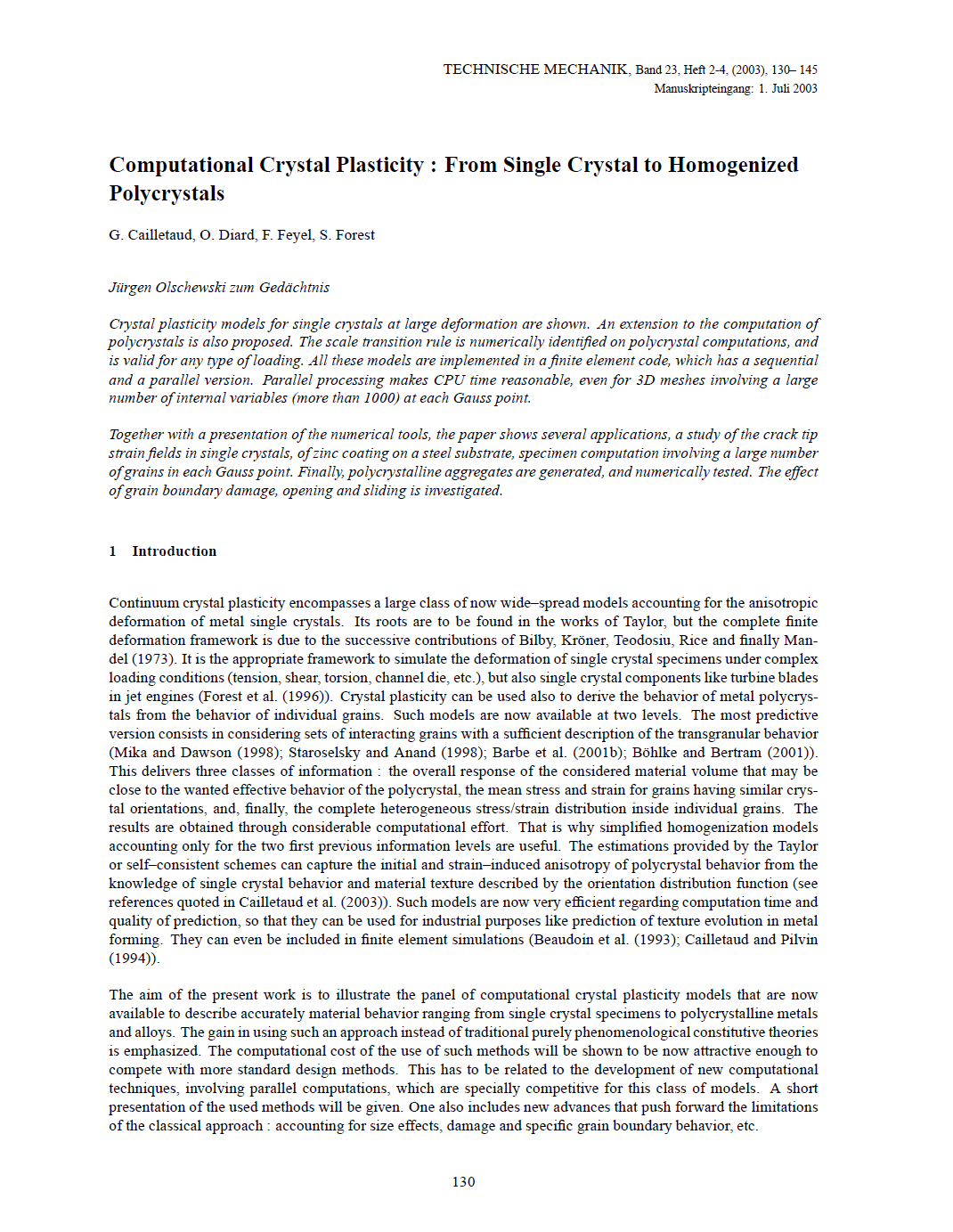Computational Crystal Plasticity: From Single Crystal to Homogenized Polycrystals
Abstract
Crystal plasticity models for single crystals at large deformation are shown. An extension to the computation of polycrystals is also proposed. The scale transition rule is numerically identified on polycrystal computations, and is valid for any type of loading. All these models are implemented in a finite element code, which has a sequential and a parallel version. Parallel processing makes CPU time reasonable, even for 3D meshes involving a large number of internal variables (more than 1000) at each Gauss point.
Together with a presentation of the numerical tools, the paper shows several applications, a study of the crack tip strain fields in single crystals, of zinc coating on a steel substrate, specimen computation involving a large number of grains in each Gauss point. Finally, polycrystalline aggregates are generated, and numerically tested. The effect of grain boundary damage, opening and sliding is investigated.





